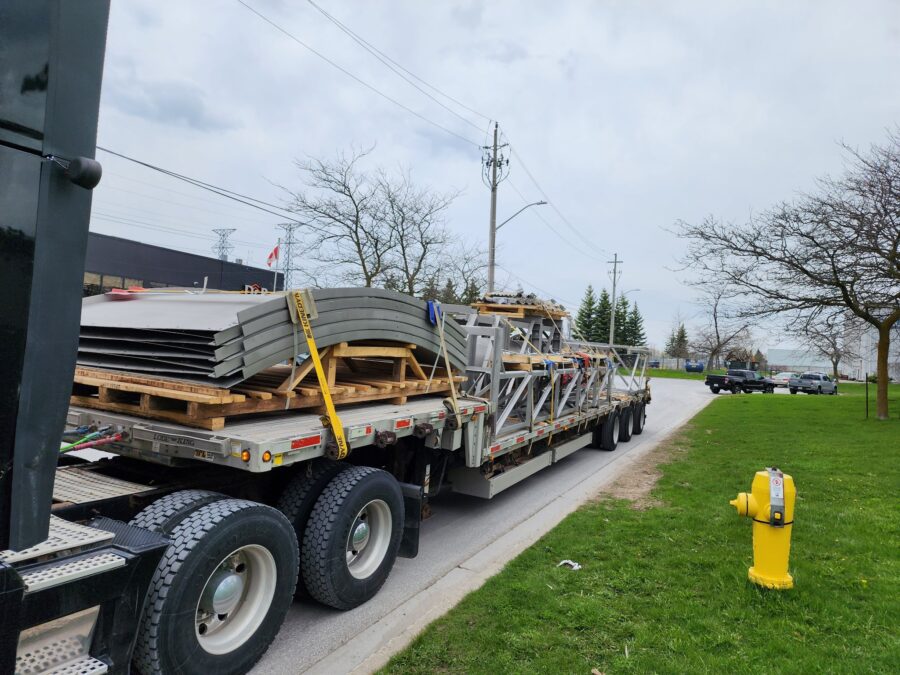In the area of freight transportation, companies are frequently faced with a dilemma when deciding whether to employ enclosed trailer shipping or flatbed shipping. Every choice has distinct benefits and drawbacks, and each must be carefully considered to meet the individual’s demands and logistical requirements. This article will compare and contrast enclosed trailer freight shipping vs flatbed shipping, emphasizing the main distinctions and advantages between the two options to help you choose the most practical and cost-effective transportation option.
What’s Embedded in Flatbed Shipping:
When products, machinery, or materials are too large, heavy, or shaped to fit into a typical enclosed trailer, flatbed shipping is used to move them. Flatbed shipping offers flexibility for huge or unusually shaped loads by allowing products to be loaded onto an open platform, in contrast to alternative freight techniques that cage cargo within a trailer.

The Top 3 Benefits of Shipping on a Flatbed:
1. Adaptability
The ability of flatbed shipping to handle a wide range of cargo sizes, shapes, and weights is one of its main benefits. Because of their adaptability, flatbeds are perfect for moving big objects like cars, machinery, and building supplies.
2. Being readily accessible
Flatbeds make it simple to load and unload cargo from a variety of perspectives. Flatbed trucks, which have no roof or walls, can carry items that need to be physically loaded and unloaded as well as those that need access from a crane or forklift. This helps to expedite the loading and unloading procedure, cutting down on turnaround times and increasing efficiency. It also streamlines the logistics of shipping goods.
3. Lower Danger of Damage
Flatbed transportation offers a reduced chance of cargo damage during transit when compared to enclosed trailers. Things shifting or collapsing against a trailer’s walls are less likely to occur. Furthermore, flatbeds enable fastening techniques like chains, straps, or specialized tools, which can help support the weight and prevent damage.

What’s Included in Enclosed Trailer Shipping?
Transporting goods within a completely covered trailer offers protection from the elements, including rain, dust, and debris. This is known as enclosed trailer shipping or alternative shipping techniques. Transporting delicate cargo, such as electronics, furniture, carpets, and other items, is frequently done using this technique.
Top 3 Benefits of Shipping in an Enclosed Trailer:
1. Defense
Cargo is shielded from the elements in enclosed trailers, including weather, road debris, and potential damage while in transit. Goods are protected from bad weather by their totally enclosed design, which guarantees they reach their destination undamaged.
2. Adaptability
Enclosed trailers can carry a variety of cargo, including delicate and other sensitive things, despite their enclosed design.
3. Adherence to Regulations
For the transportation of some types of goods that need to be protected from the elements or in compliance with regulations, enclosed trailers could be required.

In summary, there are distinct benefits and factors to consider when exporting goods using either enclosed trailer or flatbed transportation. Because of its adaptability and accessibility, flatbed shipping is appropriate for large or oddly shaped items. Conversely, transportation in an enclosed trailer provides more security and protection. The final decision between the two approaches is based on your unique requirements, the cost of shipping, and your financial situation.
